Nerve pain in nose. External Nasal Neuralgia: Understanding Neuropathic Pain in the Nose
What are the symptoms of external nasal neuralgia. How is external nasal neuralgia diagnosed. What treatments are available for external nasal neuralgia. Can external nasal neuralgia be prevented. How does external nasal neuralgia differ from other facial pain conditions.
What is External Nasal Neuralgia?
External nasal neuralgia is a rare neuropathic pain condition affecting the nose. It involves severe pain in the area supplied by the external nasal nerve, which includes the ala nasi (nostril wing) and tip of the nose. This condition falls under the category of painful cranial neuropathies and can be challenging to diagnose due to its rarity.
The nose has a complex innervation supplied by branches of the trigeminal nerve. External nasal neuralgia specifically involves the external nasal nerve, a branch of the anterior ethmoidal nerve which itself branches from the nasociliary nerve (a division of the ophthalmic branch of the trigeminal nerve).
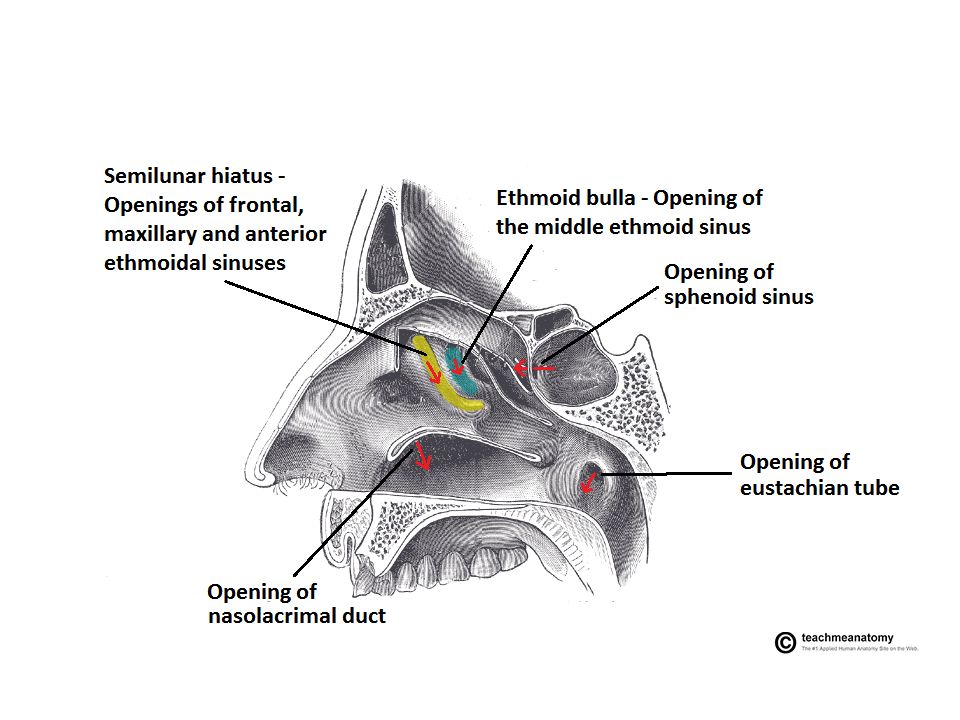
Key Symptoms and Characteristics of External Nasal Neuralgia
The primary symptoms of external nasal neuralgia include:
- Severe, excruciating pain attacks in the nose
- Pain strictly limited to the area supplied by the external nasal nerve (ala nasi and tip of nose)
- Pain typically unilateral (affecting one side of the nose)
- Attacks may occur daily or multiple times per day
- Pain described as stabbing, burning, or electric shock-like
- Attacks can be triggered by touch, temperature changes, or facial movements
Do these symptoms always indicate external nasal neuralgia? Not necessarily. While these are characteristic signs, a proper diagnosis requires ruling out other potential causes of nasal pain.
Diagnosis and Differential Considerations
Diagnosing external nasal neuralgia involves a thorough clinical evaluation and exclusion of other potential causes. The diagnostic process typically includes:
- Detailed patient history focusing on pain characteristics and triggers
- Physical examination of the nose and surrounding structures
- Neurological examination to assess cranial nerve function
- Imaging studies (e.g., MRI, CT) to rule out structural abnormalities
- Anesthetic nerve blocks as a diagnostic tool
Is a positive response to an anesthetic nerve block definitive for diagnosis? While a positive response to an anesthetic block of the external nasal nerve can be supportive of the diagnosis, it’s not always definitive. Other conditions in the differential diagnosis may include:

- Trigeminal neuralgia affecting the maxillary or ophthalmic divisions
- Nasociliary neuralgia
- Cluster headache
- Paranasal sinus pathology
- Nasal or facial trauma
- Dental problems referred to the nose
Treatment Approaches for External Nasal Neuralgia
Managing external nasal neuralgia can be challenging, but several treatment options are available:
Pharmacological Treatments
- Anticonvulsants (e.g., carbamazepine, gabapentin, pregabalin)
- Tricyclic antidepressants
- Topical lidocaine or capsaicin
Interventional Procedures
- Anesthetic nerve blocks
- Radiofrequency ablation
- Botulinum toxin injections
Surgical Options
- Microvascular decompression (in cases of nerve compression)
- Neurectomy (as a last resort)
Are these treatments equally effective for all patients? The efficacy of treatments can vary significantly between individuals. A personalized approach, often involving a combination of therapies, is typically necessary to achieve optimal pain control.
The Role of Anesthetic Nerve Blocks in External Nasal Neuralgia
Anesthetic nerve blocks play a crucial role in both the diagnosis and treatment of external nasal neuralgia. Here’s how they work:

- A local anesthetic is injected near the external nasal nerve
- The anesthetic temporarily blocks pain signals from the nerve
- If symptoms improve, it supports the diagnosis of external nasal neuralgia
- Repeated blocks can provide longer-term pain relief in some patients
Can nerve blocks cure external nasal neuralgia? While nerve blocks can provide significant pain relief, they are generally not considered a cure. The duration of relief varies, and repeated treatments may be necessary for ongoing management.
Pathophysiology and Potential Causes of External Nasal Neuralgia
The exact mechanisms underlying external nasal neuralgia are not fully understood. However, several theories and potential contributing factors have been proposed:
- Compression or irritation of the external nasal nerve
- Demyelination of the nerve, leading to aberrant signaling
- Central sensitization in pain processing pathways
- Genetic predisposition to neuropathic pain conditions
- Previous trauma or surgery affecting the nose or surrounding structures
Is external nasal neuralgia always caused by a specific identifiable factor? In many cases, no clear underlying cause can be identified, classifying the condition as idiopathic. However, a thorough evaluation is essential to rule out any potentially treatable underlying causes.

Quality of Life Impact and Psychological Considerations
External nasal neuralgia can have a significant impact on a patient’s quality of life. The severe, unpredictable nature of the pain can lead to:
- Anxiety and depression
- Social isolation
- Difficulty with daily activities and work
- Sleep disturbances
- Reduced overall well-being
How can patients cope with the psychological impact of external nasal neuralgia? Comprehensive management should include psychological support, such as:
- Cognitive-behavioral therapy
- Stress reduction techniques
- Support groups for chronic pain patients
- Mindfulness and meditation practices
Future Directions and Research in External Nasal Neuralgia
As a relatively rare and understudied condition, external nasal neuralgia presents several opportunities for future research and clinical advancements:
- Improved diagnostic criteria and guidelines
- Development of targeted pharmacological treatments
- Advanced neuroimaging techniques to better understand the pathophysiology
- Exploration of neuromodulation therapies
- Long-term outcome studies to guide treatment strategies
What role might emerging technologies play in treating external nasal neuralgia? Promising areas of research include:

- Gene therapy approaches targeting pain signaling pathways
- Advanced nerve stimulation techniques
- Personalized medicine based on genetic and biomarker profiles
- Virtual reality applications for pain management
As research progresses, our understanding of external nasal neuralgia and our ability to effectively manage this challenging condition are likely to improve significantly.
External Nasal Neuralgia: A Neuropathic Pain Within the Territory of the External Nasal Nerve
Case Reports
. 2015 Oct;55(9):1259-62.
doi: 10.1111/head.12625.
Epub 2015 Aug 3.
Héctor García-Moreno
1
, Ángel Aledo-Serrano
1
, Jesús Gimeno-Hernández
2
, María-Luz Cuadrado
1
3
Affiliations
Affiliations
- 1 Department of Neurology, Hospital Clínico San Carlos, Madrid, Spain.
- 2 Department of Otorhinolaryngology, Hospital Clínico San Carlos, Madrid, Spain.
- 3 Department of Medicine, Universidad Complutense, Madrid, Spain.

PMID:
26234481
DOI:
10.1111/head.12625
Case Reports
Héctor García-Moreno et al.
Headache.
2015 Oct.
. 2015 Oct;55(9):1259-62.
doi: 10.1111/head.12625.
Epub 2015 Aug 3.
Authors
Héctor García-Moreno
1
, Ángel Aledo-Serrano
1
, Jesús Gimeno-Hernández
2
, María-Luz Cuadrado
1
3
Affiliations
- 1 Department of Neurology, Hospital Clínico San Carlos, Madrid, Spain.

- 2 Department of Otorhinolaryngology, Hospital Clínico San Carlos, Madrid, Spain.
- 3 Department of Medicine, Universidad Complutense, Madrid, Spain.
PMID:
26234481
DOI:
10.1111/head.12625
Abstract
Background:
Nasal pain is a challenging diagnosis and very little has been reported in the neurological literature. The nose is a sophisticated structure regarding its innervation, which is supplied by the first and second divisions of the trigeminal nerve.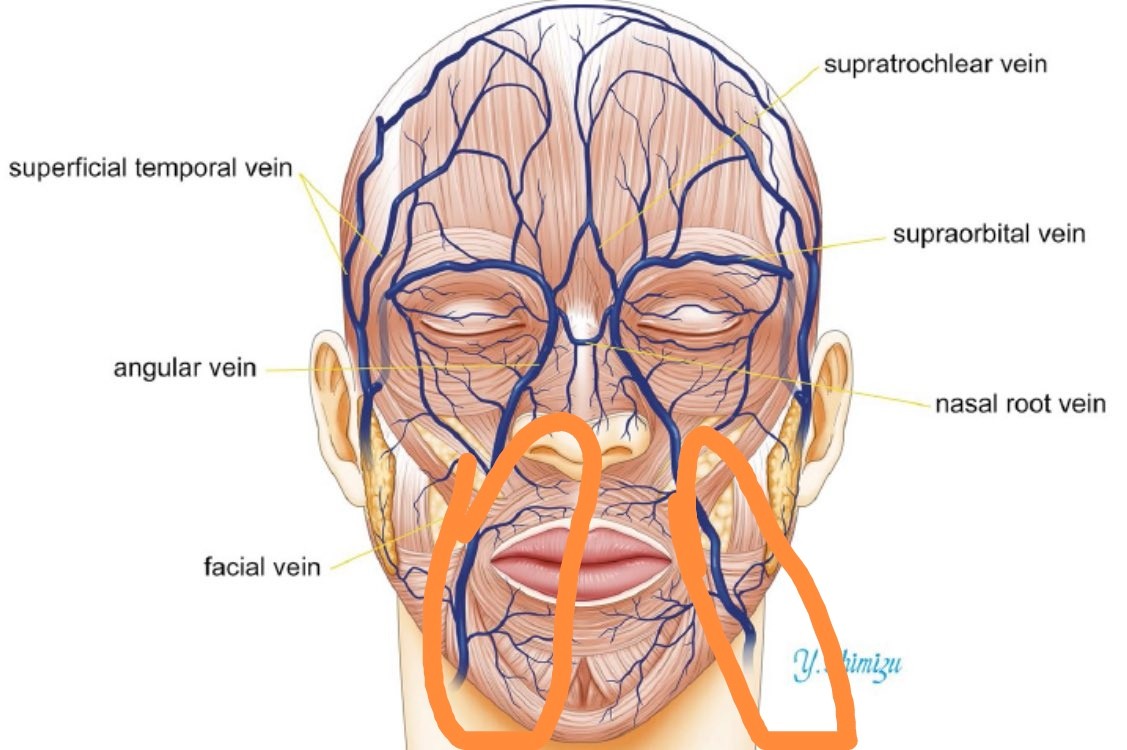 Painful cranial neuropathies are an important group in the differential diagnosis, although they have been described only scarcely. Here, we report a case that can conform a non-traumatic external nasal nerve neuralgia.
Painful cranial neuropathies are an important group in the differential diagnosis, although they have been described only scarcely. Here, we report a case that can conform a non-traumatic external nasal nerve neuralgia.
Case:
A 76-year-old woman was referred to our office due to pain in her left nose. She was suffering from daily excruciating attacks, which were strictly limited to the territory supplied by her left external nasal nerve (left ala nasi and apex nasi). She denied previous traumatisms and the ancillary tests did not yield any underlying pathology. An anesthetic blockade of her left external nasal nerve achieved a marked reduction of the number of episodes as well as their intensity.
Conclusion:
External nasal neuralgia seems a specific neuralgia causing nasal pain. Anesthetic blockades of the external nasal nerve may be a valid treatment for this condition.
Keywords:
anesthetic blockade; external nasal nerve; external nasal neuralgia; nasal pain; nasociliary neuralgia.
© 2015 American Headache Society.
Similar articles
External Nasal Neuralgia: an Update.
Nierenburg H, Morris MS.
Nierenburg H, et al.
Curr Pain Headache Rep. 2017 Sep 13;21(11):44. doi: 10.1007/s11916-017-0645-5.
Curr Pain Headache Rep. 2017.PMID: 28900824
Review.
Post-traumatic external nasal pain syndrome (a trigeminal based pain disorder).
Rozen T.
Rozen T.
Headache. 2009 Sep;49(8):1223-8. doi: 10.1111/j.1526-4610.2009.01485.x. Epub 2009 Jul 8.
Headache. 2009.PMID: 19619239
Lacrimal Nerve Blocks for Three New Cases of Lacrimal Neuralgia.

Cuadrado ML, Gutiérrez-Viedma Á, Silva-Hernández L, Orviz A, García-Moreno H.
Cuadrado ML, et al.
Headache. 2017 Mar;57(3):460-466. doi: 10.1111/head.12985. Epub 2016 Nov 11.
Headache. 2017.PMID: 27861819
Infratrochlear neuralgia: A prospective series of seven patients treated with infratrochlear nerve blocks.
Villar-Quiles RN, García-Moreno H, Mayo D, Gutiérrez-Viedma Á, Ramos MI, Casas-Limón J, Cuadrado ML.
Villar-Quiles RN, et al.
Cephalalgia. 2018 Mar;38(3):585-591. doi: 10.1177/0333102417690493. Epub 2017 Jan 23.
Cephalalgia. 2018.PMID: 28114806
Neural modulation by blocks and infusions.
Varrassi G, Paladini A, Marinangeli F, Racz G.
Varrassi G, et al.
Pain Pract. 2006 Mar;6(1):34-8. doi: 10.1111/j.1533-2500.2006.00056.x.
doi: 10.1111/j.1533-2500.2006.00056.x.
Pain Pract. 2006.PMID: 17309707
Review.
See all similar articles
Cited by
A Case of Post-traumatic Persistent Nasal Pain.
Puma M, Petolicchio B, Viganò A, Maestrini I, Di Piero V.
Puma M, et al.
Front Neurol. 2020 Feb 3;10:1409. doi: 10.3389/fneur.2019.01409. eCollection 2019.
Front Neurol. 2020.PMID: 32116984
Free PMC article.External Nasal Neuralgia: an Update.
Nierenburg H, Morris MS.
Nierenburg H, et al.
Curr Pain Headache Rep. 2017 Sep 13;21(11):44. doi: 10.1007/s11916-017-0645-5.
Curr Pain Headache Rep. 2017.PMID: 28900824
Review.
Publication types
MeSH terms
Substances
Trigeminal Neuralgia | Johns Hopkins Medicine
What You Need to Know
- Trigeminal neuralgia most frequently affects people older than 50, and the condition is more common in women than men.

- Trigeminal neuralgia is the most common cause of facial pain and is diagnosed in approximately 15,000 people per year in the United States.
- Trigeminal neuralgia pain is exceptionally severe. Although the condition is not life-threatening, the intensity of the pain can be debilitating.
- Trigeminal neuralgia relief is possible: Medical and surgical treatments can bring the pain under control, especially when managed by an expert physician and surgeon.
What is trigeminal neuralgia?
Trigeminal neuralgia is a condition characterized by pain coming from the trigeminal nerve, which starts near the top of the ear and splits in three, toward the eye, cheek and jaw. We have two trigeminal nerves: one for each side of our face, but trigeminal neuralgia pain most commonly affects only one side.
The pain of trigeminal neuralgia is unlike facial pain caused by other problems. It is often described as stabbing, lancinating or electrical in sensation and so severe that the affected person cannot eat or drink. The pain travels through the face in a matter of seconds, but as the condition progresses, the pain can last minutes and even longer.
The pain travels through the face in a matter of seconds, but as the condition progresses, the pain can last minutes and even longer.
Trigeminal neuralgia is sometimes known as tic douloureux, which means “painful tic.”
Causes of Trigeminal Neuralgia
Trigeminal neuralgia usually occurs spontaneously, but is sometimes associated with facial trauma or dental procedures.
The condition may be caused by a blood vessel pressing against the trigeminal nerve, also known as vascular compression. Over time, the pulse of an artery rubbing against the nerve can wear away the insulation, which is called myelin, leaving the nerve exposed and highly sensitive.
The resulting symptoms can be similar to those caused by dental problems, and sometimes people with undiagnosed trigeminal neuralgia explore multiple dental procedures in an effort to control the pain.
Multiple sclerosis or a tumor — while rare — can also cause trigeminal neuralgia. Researchers are exploring whether or not postherpetic neuralgia (caused by shingles) can be related to this condition.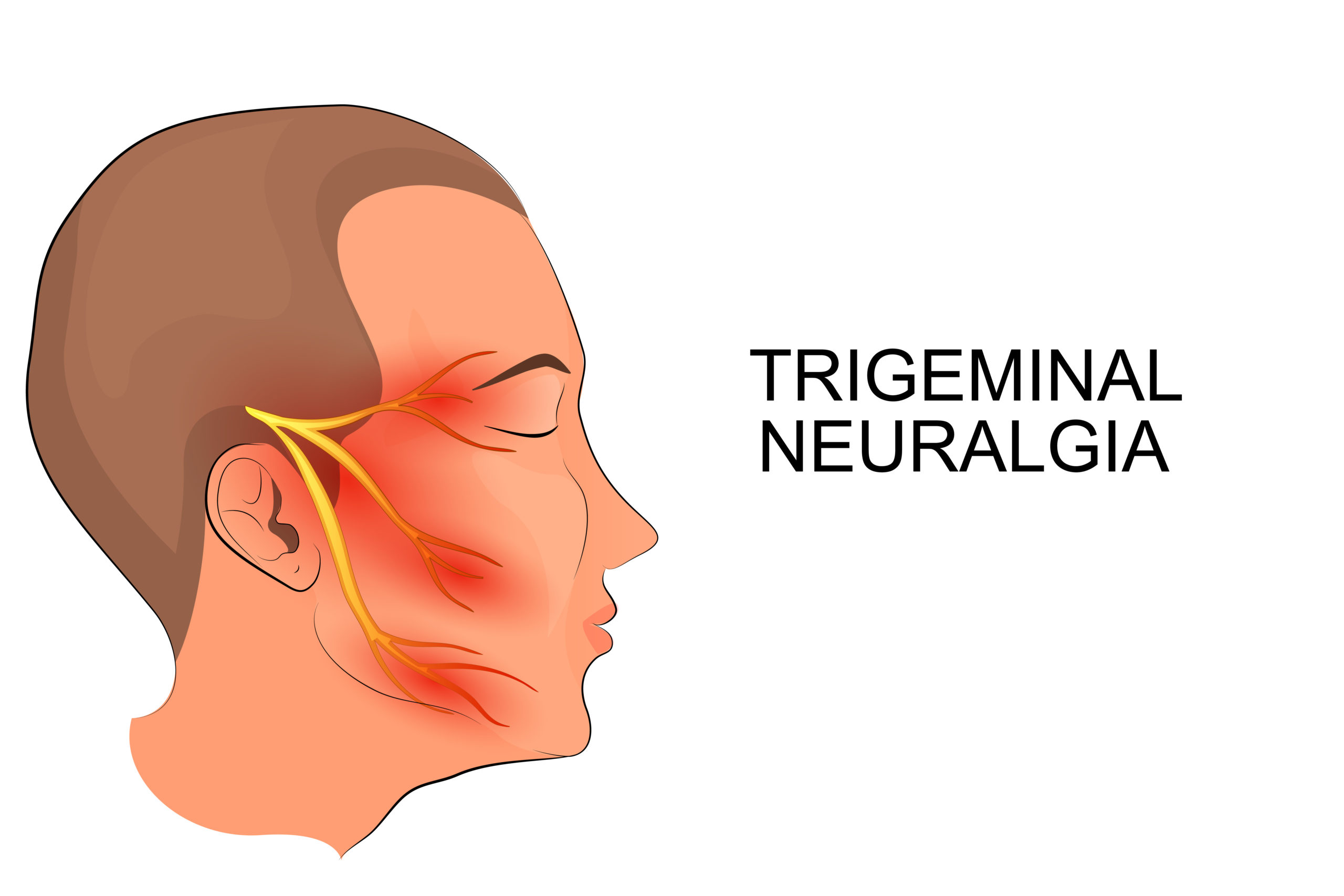
Trigeminal Neuralgia Symptoms
Trigeminal neuralgia occurs more often in women than men, is more common in older people (usually 50 and older), and occurs more on the right than the left. It doesn’t usually run in families.
Trigeminal neuralgia symptoms may include:
- Episodes of sharp, intense, stabbing pain in the cheek or jaw that may feel like an electric shock. Pain episodes may be triggered by anything touching the face or teeth, including shaving, applying makeup, brushing teeth, touching a tooth or a lip with the tongue, eating, drinking or talking — or even a light breeze or water hitting the face.
- Periods of relief between episodes.
- Anxiety from the thought of the pain returning.
Trigeminal Neuralgia Pain
The trigeminal nerve splits off into three branches: ophthalmic, maxillary and mandibular. Each branch provides sensation to different areas of the face. Depending on which branch and which part of the nerve is irritated, trigeminal neuralgia pain can be felt anywhere in the face.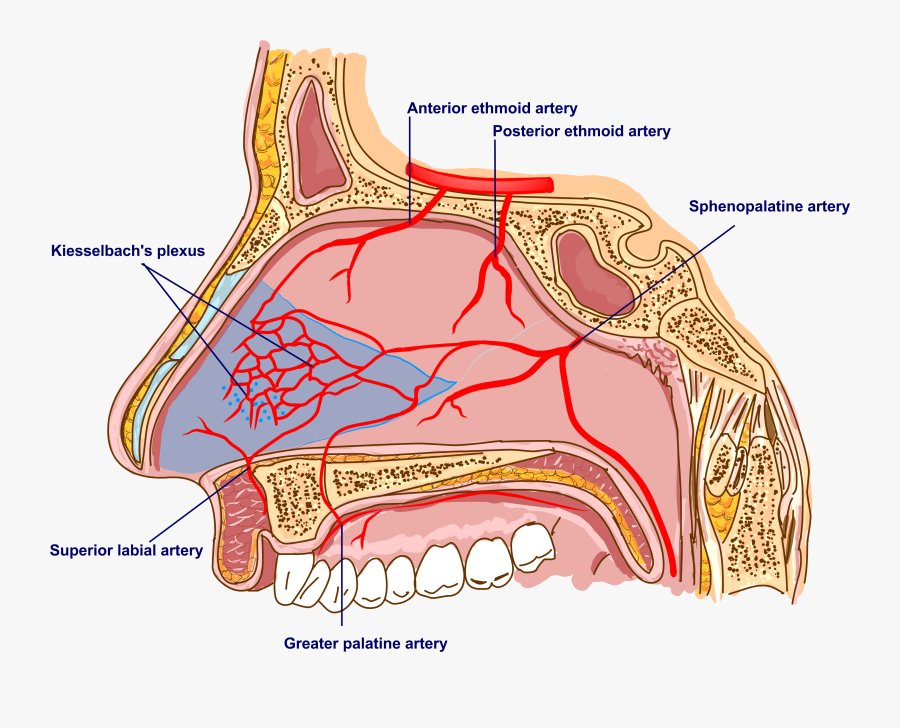 Most commonly, it is felt in the lower part of the face. The intensity of the pain is exceptional: Some people report it to be more severe than experiencing a heart attack, passing a kidney stone or even giving birth.
Most commonly, it is felt in the lower part of the face. The intensity of the pain is exceptional: Some people report it to be more severe than experiencing a heart attack, passing a kidney stone or even giving birth.
A flare-up of trigeminal neuralgia may begin with tingling or numbness in the face. Pain occurs in intermittent bursts that last anywhere from a few seconds to two minutes, becoming more and more frequent until the pain is almost continuous.
Flare-ups may continue for a few weeks or months followed by a pain-free period that can last a year or more. Although trigeminal neuralgia pain may seem to disappear, it always comes back, often with more intensity.
In some cases, instead of sharp, stabbing pain, trigeminal neuralgia appears as a persisting dull ache. This and other symptom variations are sometimes described as “atypical trigeminal neuralgia.”
Trigeminal Neuralgia Diagnosis
Diagnosing trigeminal neuralgia involves a physical exam and a detailed medical history to rule out other causes of facial pain. Your health care provider (usually your primary care doctor or a neurologist) will ask about the frequency and intensity of the pain, what seems to set it off and what makes it feel better or worse. Since there is no single test for trigeminal neuralgia, getting to the nature of the pain is key to the diagnosis.
Your health care provider (usually your primary care doctor or a neurologist) will ask about the frequency and intensity of the pain, what seems to set it off and what makes it feel better or worse. Since there is no single test for trigeminal neuralgia, getting to the nature of the pain is key to the diagnosis.
Your provider may also recommend imaging or laboratory tests, such as a CAT scan or a high-resolution MRI of the trigeminal nerve and surrounding areas. These tests can help determine if the pain is caused by a tumor or blood vessel abnormality, or by undiagnosed multiple sclerosis. Certain advanced MRI techniques may help the doctor see where a blood vessel is pressing against a branch of the trigeminal nerve.
Trigeminal Neuralgia Treatment
Most common over-the-counter and prescription pain medicines don’t work for people with trigeminal neuralgia, but many modern treatments can reduce or eliminate the pain. The doctor may recommend one or more of these approaches:
Trigeminal Neuralgia Medications
Many people who suffer from trigeminal neuralgia successfully manage this condition for many years with medication. Trigeminal neuralgia drug therapy uses some of the same medicines prescribed for controlling seizures, which includes carbamazepine, gabapentin and similar agents. Regular blood tests may be required for some medications to check your white blood cell count, platelets, sodium levels and liver function.
Trigeminal neuralgia drug therapy uses some of the same medicines prescribed for controlling seizures, which includes carbamazepine, gabapentin and similar agents. Regular blood tests may be required for some medications to check your white blood cell count, platelets, sodium levels and liver function.
Your neurologist or primary care physician can help you select the best drug and the most appropriate dosage. Most patients start out on low doses, gradually increasing the dose under clinical supervision until they achieve the best pain relief with the least amount of side effects.
Trigeminal Nerve Blocks
Nerve blocks are injections (with a steroid medication or another agent) made at various parts of the nerve to reduce pain. They may provide temporary pain relief for people with trigeminal neuralgia. Multiple injections are usually needed to achieve the desired relief, and the effects may have different durations for different people.
Surgery for Trigeminal Neuralgia
If medication no longer controls your trigeminal neuralgia pain despite the increased dosage, or if the side effects are intolerable, there are several surgical procedures to consider.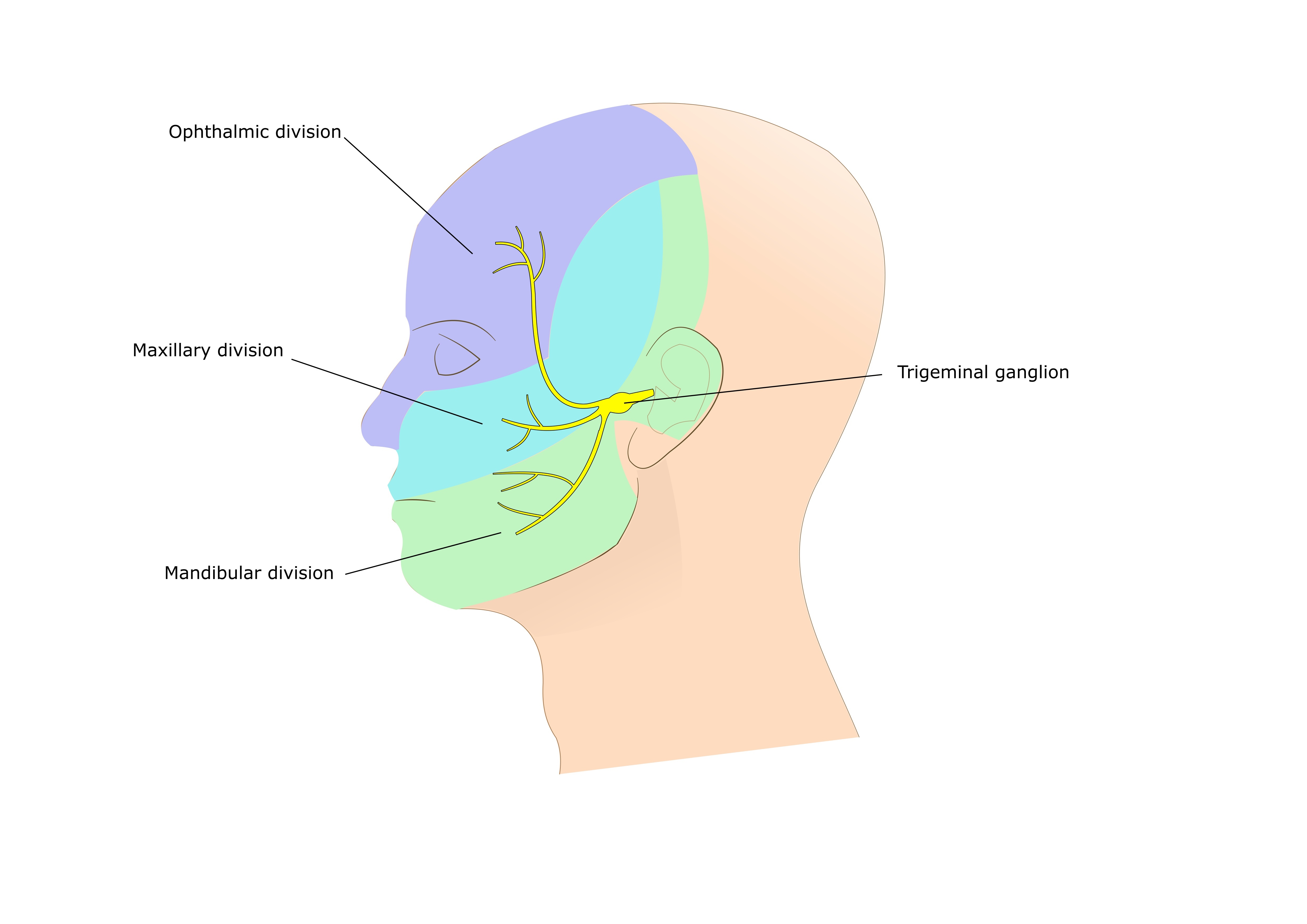 It helps to learn about these options before you are in urgent need of relief so you and your doctor have time to evaluate them. Your overall health, age, pain level and the availability of the procedure will all factor in to this decision. Most people with trigeminal neuralgia are candidates for any of the surgical treatment options — your doctor can help you decide which ones and in what order you should consider them.
It helps to learn about these options before you are in urgent need of relief so you and your doctor have time to evaluate them. Your overall health, age, pain level and the availability of the procedure will all factor in to this decision. Most people with trigeminal neuralgia are candidates for any of the surgical treatment options — your doctor can help you decide which ones and in what order you should consider them.
The surgery for trigeminal neuralgia is delicate and precise since the involved area is very small. Look for experienced neurosurgeons who see and treat a large number of people with trigeminal neuralgia.
Rhizotomy
There are several kinds of rhizotomies for trigeminal neuralgia, which are all outpatient procedures performed under general anesthesia in the operating room. The surgeon inserts a long needle through the cheek on the affected side of the face and uses an electrical current (heat) or a chemical (glycerin or glycerol) to deaden the pain fibers of the trigeminal nerve. For those undergoing trigeminal neuralgia rhizotomy for the first time, the chemical approach is typically recommended. Those who have the procedure repeated often benefit from both the chemical and the heat treatment delivered in the same session.
For those undergoing trigeminal neuralgia rhizotomy for the first time, the chemical approach is typically recommended. Those who have the procedure repeated often benefit from both the chemical and the heat treatment delivered in the same session.
The procedure takes about 30 minutes and most patients go home several hours later with less to no pain. Out of the three surgical options, rhizotomy offers the most immediate relief from trigeminal neuralgia pain. You may experience some swelling or bruising of the cheek. Your doctor will prescribe pain medications and, if necessary, give you a plan to gradually discontinue your medications.
Rhizotomy provides pain relief to about 80% of patients with trigeminal neuralgia, but it’s a temporary solution that usually lasts one to three years, until the nerve regrows.
Rhizotomy is a recommended surgical treatment for patients with trigeminal neuralgia resulting from multiple sclerosis (MS). It is minimally invasive and can be safely repeated, since the pain is more likely to come back due to the progression of MS.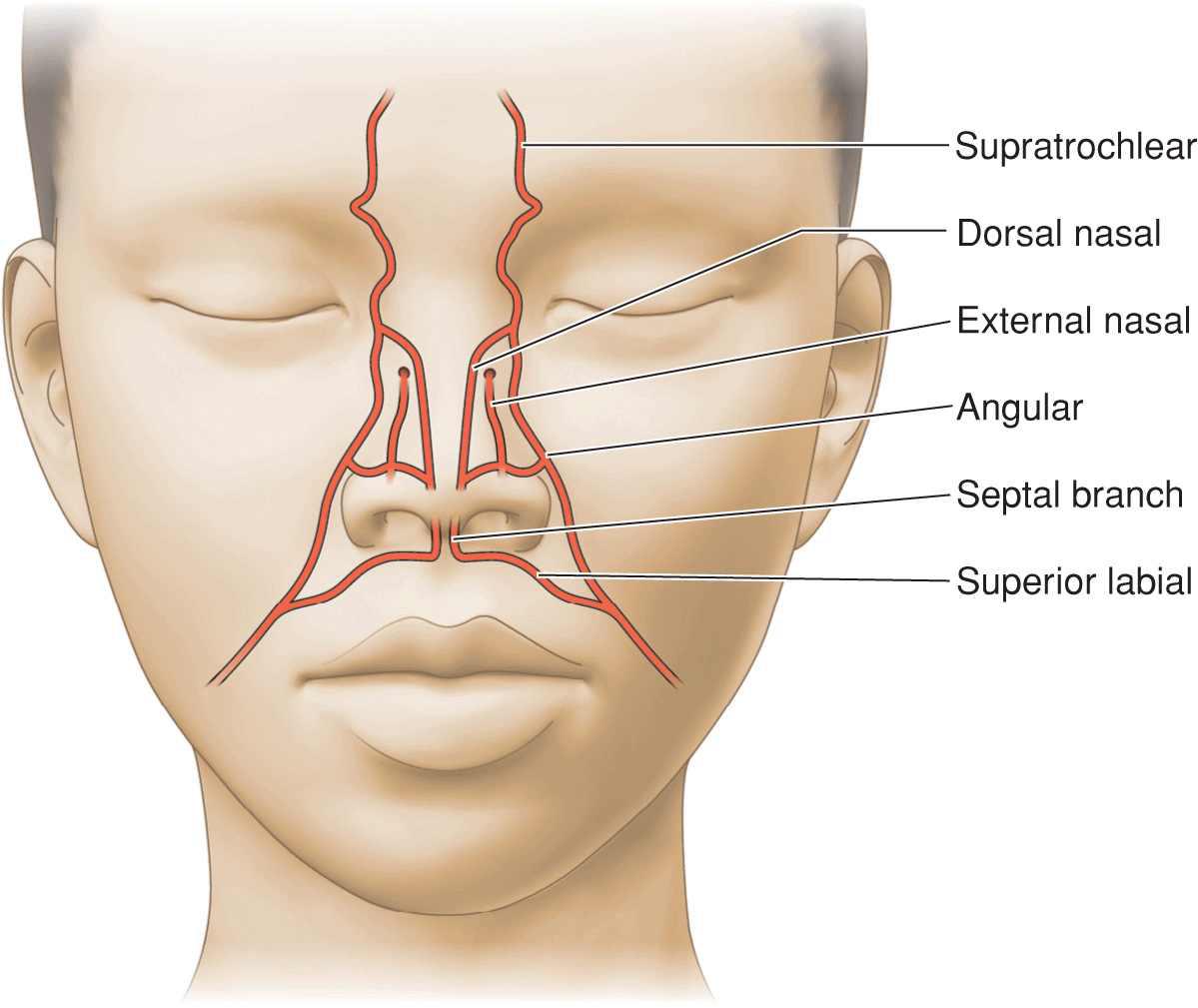
Microvascular Decompression (MVD) Surgery
Microvascular decompression (MVD) surgery is regarded as the most long-lasting treatment for trigeminal neuralgia caused by blood vessel compression, and it helps about 80% of people with this diagnosis. It is suitable for people in good health who can tolerate surgery and general anesthesia, and whose lifestyles can accommodate a recovery period of four to six weeks.
The goal of the MVD surgery is to separate the blood vessel from the trigeminal nerve by placing a cushion made of Teflon between them. The surgeon makes an incision behind the ear and removes a small piece of the skull to gain access to the trigeminal nerve and surrounding blood vessels. Then, the surgeon places a cushion around the blood vessel so it no longer compresses or rubs against the nerve. The surgery takes two to three hours, and patients can expect to spend up to a couple of days in the hospital for recovery and observation. The pain relief with MVD is quick but not immediate.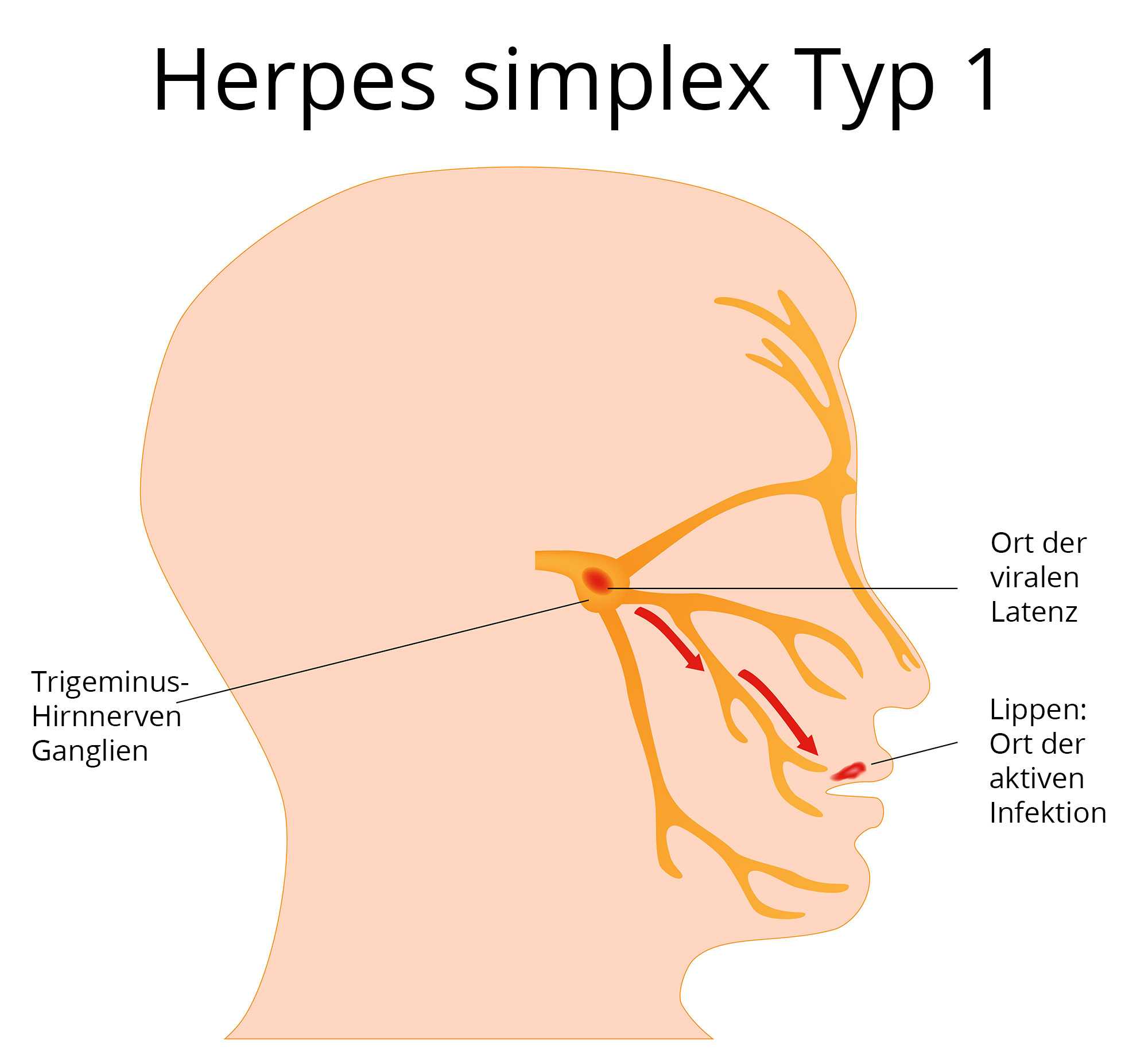
The risks of this surgery include cerebral spinal fluid leak, hearing loss (if the hearing nerve is affected) and facial numbness that may persist in some cases. In rare cases, bleeding, infection, seizures and paralysis are possible.
In some people treated with MVD surgeries, trigeminal neuralgia pain may return, possibly due to the blood vessels growing back. If this happens, your doctor will help you choose other options. The MVD procedure is rarely repeated.
Stereotactic Radiosurgery
Stereotactic radiosurgery, sometimes known as CyberKnife or Gamma Knife treatment, is another outpatient procedure that can be used to treat trigeminal neuralgia. It involves a very concentrated and precise beam of radiation that is directed at the trigeminal nerve to relieve the pain. The surgeons use MRI and CT scans to generate a detailed image of the head to locate the trigeminal nerve. Then, they work with radiation oncologists and physicists to deliver the radiation treatment, which takes about 45 minutes.
This procedure is painless and is performed without anesthesia. Close to 70% of patients experience significant pain relief within weeks of undergoing stereotactic radiosurgery for trigeminal neuralgia. The relief may last for several years, but in some cases the nerve may recover from radiation and resume transmitting pain.
Side effects are minimal and may include fatigue and facial numbness, so the recovery time is brief. Because this procedure involves high doses of radiation delivered near the brain, it’s recommended that patients receive it no more than two times as a treatment for trigeminal neuralgia.
Trigeminal Neuralgia Surgery | Michelle’s Story
Clinical Trials
Patients who have tried medications and surgical options and keep experiencing debilitating pain may qualify for clinical trials to help manage trigeminal neuralgia. These studies typically explore new medications that have a potential to provide the desired pain relief.
These studies typically explore new medications that have a potential to provide the desired pain relief.
Speak to your neurosurgeon if you are interested in joining a clinical trial for trigeminal neuralgia.
Acupuncture and Other Integrative Medicine Treatments
Acupuncture involves insertion of thin needles along the “trigger points” to provide pain relief. Some people with trigeminal neuralgia report that acupuncture helps reduce intensity and/or frequency of flare-ups.
Meditation, wellness clinics and lifestyle modification programs are also options for those looking for more natural trigeminal neuralgia treatments or a supplemental treatment after surgery.
Caring for a Loved One with Trigeminal Neuralgia
Although not fatal, trigeminal neuralgia pain and the anxiety it causes can erode the quality of life not only for the person suffering, but for those around them. Understanding the severity of the pain the person is going through and being accommodating are the first steps to caring for a loved one with trigeminal neuralgia. Other steps may include:
Other steps may include:
- Helping your loved one stay on track with his or her medications and communicating about the success of the treatment.
- Encouraging doctor visits and exploring other treatment options when medications stop working.
- Helping locate and coordinate appointments with doctors who can offer evaluations and second opinions.
It is essential to work closely with experienced and compassionate health care providers who can help find the best therapeutic approach for each person.
Pain syndrome in diseases of the nose and paranasal sinuses
Headache, according to B. Friedman et al. [1], is one of the most common reasons for seeking medical help. Many patients with headaches turn to an otorhinolaryngologist on their own or are referred by general practitioners, neurologists and other specialists. Sinusitis is known to cause secondary headaches. Therefore, the occurrence of headache is often associated with pathologies of the paranasal sinuses (SNP), given their anatomical location. However, many patients have false ideas about the structure of the upper respiratory tract, and some simply refuse to consider other possible causes of pain. Differential diagnosis of headache in sinusitis is sometimes a difficult task. First of all, it is necessary to exclude migraine and other primary types of headache. Diagnosis is hampered, firstly, by the high prevalence of nasal diseases and SNPs in the population, as well as by the fact that the patient has a high probability of simultaneous headache and sinusitis that are not related to each other; secondly, the combination of many types of headaches with autonomic symptoms such as nasal congestion and rhinorrhea.
However, many patients have false ideas about the structure of the upper respiratory tract, and some simply refuse to consider other possible causes of pain. Differential diagnosis of headache in sinusitis is sometimes a difficult task. First of all, it is necessary to exclude migraine and other primary types of headache. Diagnosis is hampered, firstly, by the high prevalence of nasal diseases and SNPs in the population, as well as by the fact that the patient has a high probability of simultaneous headache and sinusitis that are not related to each other; secondly, the combination of many types of headaches with autonomic symptoms such as nasal congestion and rhinorrhea.
In 1948, H. Wolff conducted a series of experiments in which he directly stimulated various parts of the nasal mucosa and SNP [2]. In the course of his work, he discovered that the region of the fistulas of the SNP is more sensitive than their mucous membrane, and the turbinates are more sensitive than the mucous membrane of the nasal septum.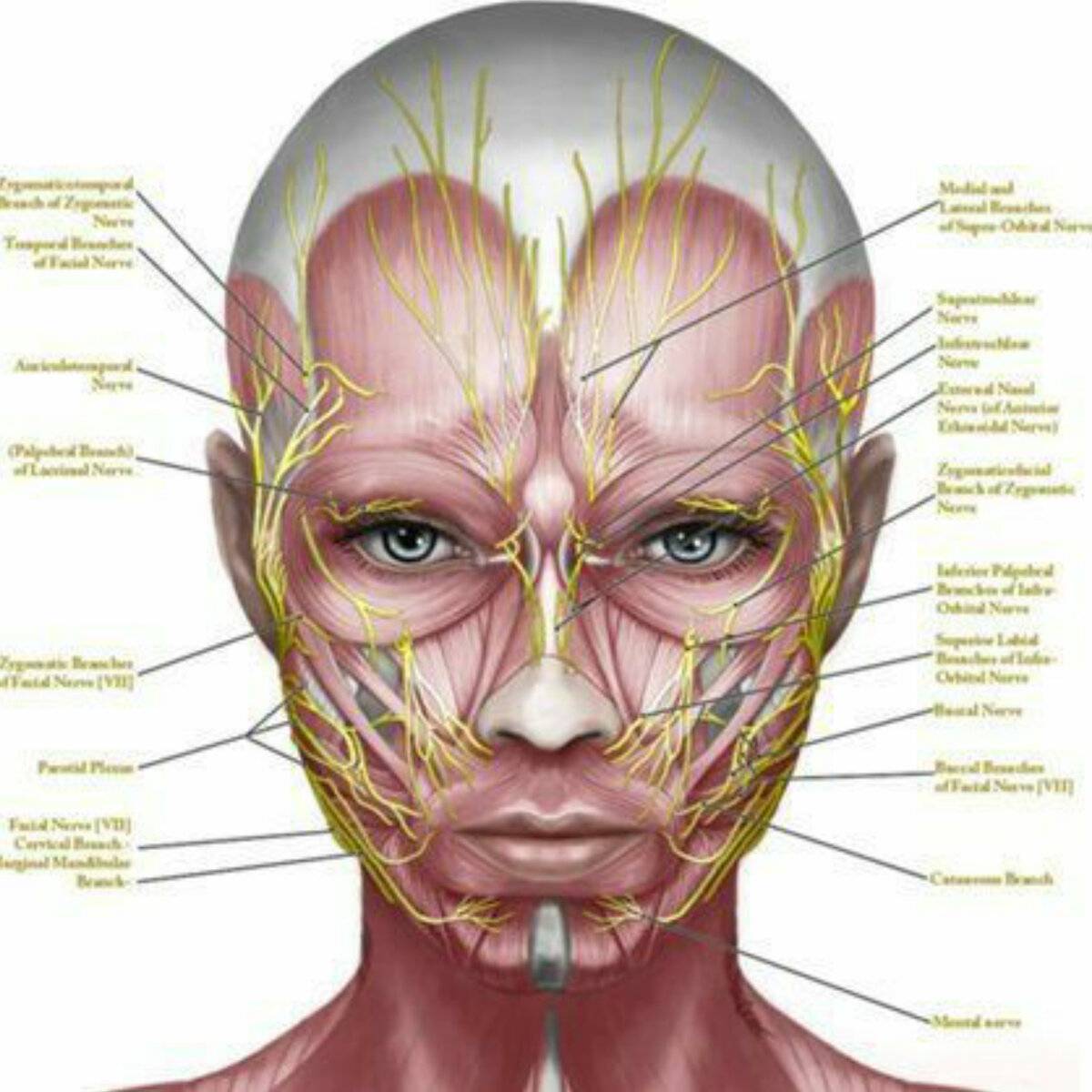
The pathophysiology of migraine is directly related to the issue of rhinogenic headache. One of the links in the pathogenesis of migraine is the sensitization of peripheral neurons of the trigeminal nerve. This leads to a central increase in sensitivity at the level of the caudal part of the nucleus of the spinal cord of the trigeminal nerve and causes pain in the zones of innervation of its first (ophthalmic) or second (maxillary) branches. This early phase in most patients is accompanied by cutaneous allodynia, i.e., pain in response to minimal tactile stimuli that usually do not cause pain. For example, pain due to irritation of the nasal mucosa can be caused by inhalation of cold air [3]. Understanding the clinical picture is often complicated by the fact that a migraine attack may be accompanied by secondary nasal symptoms, which are probably caused by stimulation of the parasympathetic nervous system through the superior salivary nucleus of the facial nerve [4]. Activation of the parasympathetic nervous system causes blood stasis and swelling of the nasal mucosa. In this case, areas of contact of the surface of the nasal mucosa are formed in narrow zones, which in some patients can cause pain (“contact points”). Therefore, a number of authors suggest surgical correction of areas with “contact points” even in patients with migraine pain [5].
In this case, areas of contact of the surface of the nasal mucosa are formed in narrow zones, which in some patients can cause pain (“contact points”). Therefore, a number of authors suggest surgical correction of areas with “contact points” even in patients with migraine pain [5].
Being an extremely common symptom, headache can often be combined with other diseases that are not pathogenetically associated with it. It has been shown that in patients with chronic sinusitis, headache occurs 9 times more often than in other people [6]. In the course of a retrospective analysis, D. Lal et al. analyzed the data of 211 patients admitted for examination to an otorhinolaryngologist for pain, sensation of pressure or fullness in the projection of the SNP. Of these, 29% of patients had no pathology from the nasal cavity and SNP. In 71% of patients, various diseases of the nose and SNPs were found. At 49% of the total number of patients were diagnosed with primary headache, and 7% – odontogenic diseases [7]. Another study showed that chronic sinusitis worsens migraine, which becomes more refractory to treatment [8]. According to our data, patients with polypous cystic sinusitis in 24% of cases complained of a headache of one or another localization. Thus, one patient may have both migraine and sinusitis, which can enter into complex pathogenetic relationships.
Another study showed that chronic sinusitis worsens migraine, which becomes more refractory to treatment [8]. According to our data, patients with polypous cystic sinusitis in 24% of cases complained of a headache of one or another localization. Thus, one patient may have both migraine and sinusitis, which can enter into complex pathogenetic relationships.
Headache or a feeling of pressure in the projection area of the SNP are one of the main symptoms of acute and chronic sinusitis. The development of headache in sinusitis is associated with irritation of the nerve endings in the mucous membrane of the SNP by inflammatory agents and waste products of bacteria, the pressure of exudate accumulated in the sinuses when the fistulas are blocked, as well as excessive pulsatile stretching of the arteries [9]. For a diagnosis of sinusitis, the pain must also be associated with other known symptoms: difficulty in nasal breathing, nasal discharge, changes in the x-ray or computed tomography (CT) of the SNP.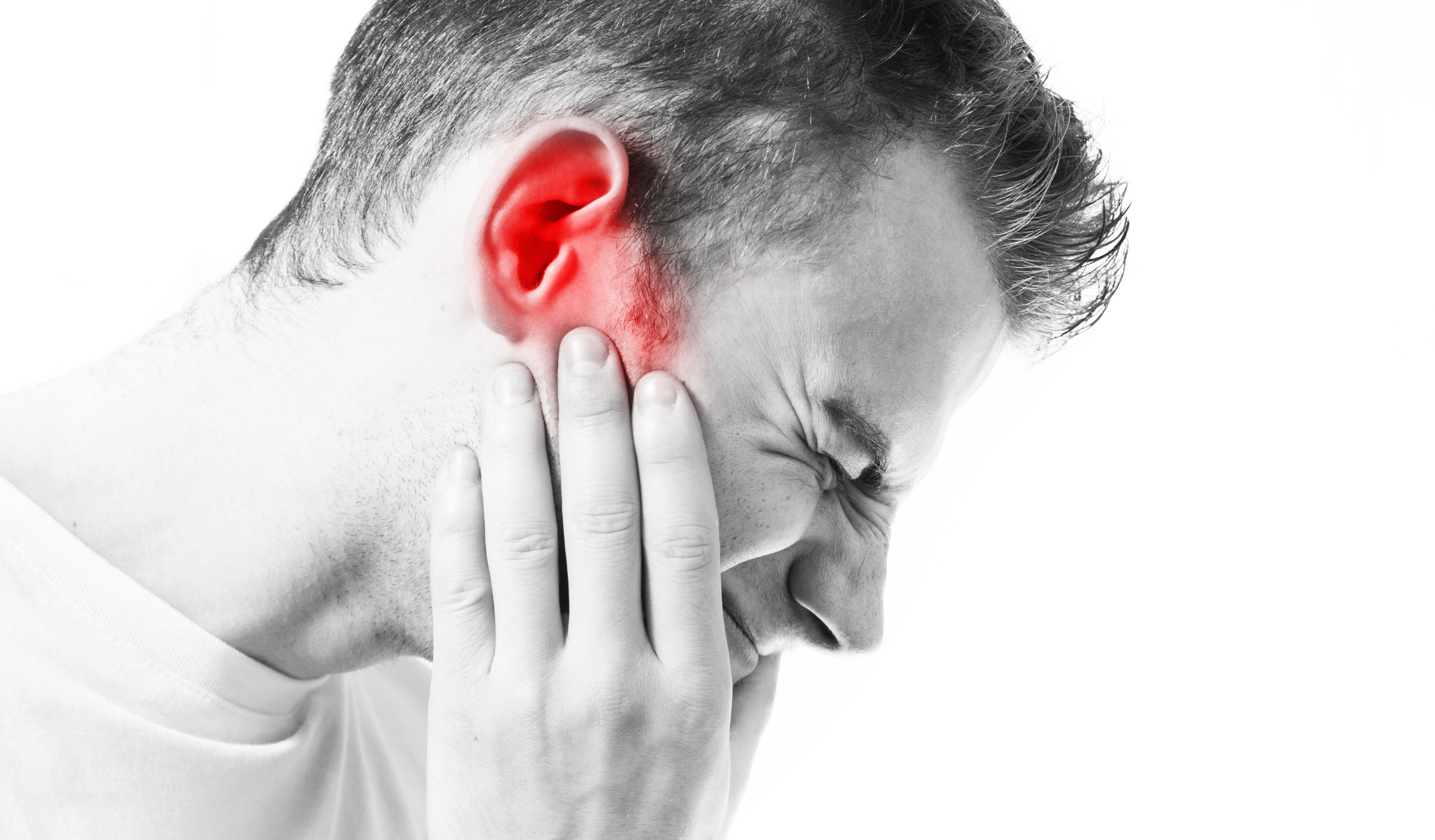 Current diagnostic criteria for different types of headaches are based on the 2013 classification of the International Headache Society. It includes categories of headaches secondary to acute or chronic sinusitis. Headache is considered separately, which can be caused by changes in the mucous membrane of the nasal cavity, its septum or turbinates (if there are “contact points” on the mucous membrane of the nasal cavity).
Current diagnostic criteria for different types of headaches are based on the 2013 classification of the International Headache Society. It includes categories of headaches secondary to acute or chronic sinusitis. Headache is considered separately, which can be caused by changes in the mucous membrane of the nasal cavity, its septum or turbinates (if there are “contact points” on the mucous membrane of the nasal cavity).
The localization of headache in sinusitis is diverse. The side of pain may not correspond to the side of the lesion. Headache in the frontal region may be associated with damage to the frontal or ethmoid sinuses. Pain from the maxillary sinus can be projected onto the region of the upper jaw, radiate to the teeth of the upper jaw, gums and temporal region (Fig. 1, a). Rice. 1. Headache topography: variants of its irradiation in maxillary sinusitis and frontal sinusitis (a), ethmoiditis (b) and sphenoiditis (c).
Inflammation of the ethmoid sinuses often causes pain in the area of the medial angle of the eye, but it can also spread to the parietal or temporal region, as well as the upper cervical region (Fig.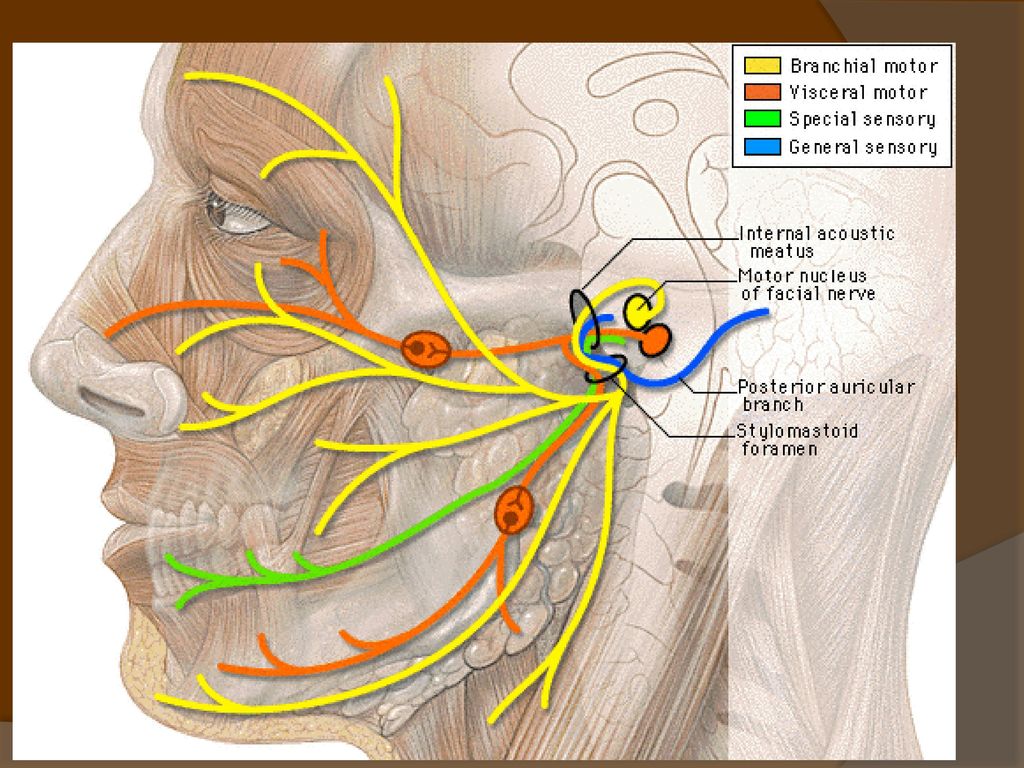 1, b).
1, b).
Sphenoiditis usually provokes pain in the retroorbital region, but patients may also complain of pain in the parietal and occipital regions, teeth, and even the shoulder region (Fig. 1c) [10].
The key to a correct diagnosis in patients with rhinogenic headache is a thorough sequential examination, which includes a detailed collection of complaints and anamnesis data, assessment of local status with an endoscopic examination of the nasal cavity, CT of the SNP and a mandatory examination by a neurologist. Particular attention should be paid to the history of the disease: to clarify the time of onset of pain, provoking factors, the duration and nature of the attacks, as well as the presence or absence of a connection between pain and other symptoms of sinusitis – nasal congestion, increased discharge from it, etc. Endoscopic examination helps not only to clarify the activity of the pathological process, if any, but also to find the “contact points” of the mucous membrane of the nasal cavity – the places where its sections come into contact. Thus, sinusogenic headache should be accompanied by the presence of other clinical, endoscopic and radiological signs of pathology, and its increase and decrease in time should be correlated with the clinical course of the underlying disease.
Thus, sinusogenic headache should be accompanied by the presence of other clinical, endoscopic and radiological signs of pathology, and its increase and decrease in time should be correlated with the clinical course of the underlying disease.
Contact areas of the nasal mucosa remain an ambiguous cause of rhinogenic headache. Such “touch points” can often be found on CT scans of the SNPs, but their correlation with headache or facial pain is very weak. Thus, in a study of 973 CT scans, the prevalence of “contact points” was 4%, while it was identical among patients both with and without headache. Moreover, in patients with complaints of unilateral headache, contact points were found on the opposite side in 50% of cases [11]. Other studies have demonstrated a higher prevalence of “points of contact” (up to 55% of patients), which may be due to different interpretations of this term; however, in these studies, a clear relationship between “contact points” and headache was not obtained [12]. Increased pneumatization of the middle turbinates ( concha bullosa ) is also considered by a number of authors as one of the possible causes of rhinogenic headache. To confirm the influence of “contact points” on a headache in a particular patient, most researchers conduct the so-called lidocaine test – during a headache, lidocaine with a decongestant is applied to the mucous membrane in the contact area. The test is considered positive if there is a weakening of the headache [13].
Increased pneumatization of the middle turbinates ( concha bullosa ) is also considered by a number of authors as one of the possible causes of rhinogenic headache. To confirm the influence of “contact points” on a headache in a particular patient, most researchers conduct the so-called lidocaine test – during a headache, lidocaine with a decongestant is applied to the mucous membrane in the contact area. The test is considered positive if there is a weakening of the headache [13].
According to the literature, many patients who visit an otorhinolaryngologist with rhinogenic pain actually suffer from some form of migraine [14]. Thus, migraine is one of the likely diagnoses in patients with complaints of headache, in whom endoscopic and radiological signs of sinusitis are not detected during examination (see table). Differential diagnosis of migraine, tension headache and headache in chronic sinusitis In addition to migraine, other primary types of headache are often found: abuse headache, trigeminal neuralgia, as well as trigeminal autonomic cephalgia (cluster headache and paroxysmal hemicrania), persistent hemicrania and headache tension pain. Among the secondary headache syndromes, an otorhinolaryngologist more often than others has to exclude dysfunction of the temporomandibular joint [15].
Among the secondary headache syndromes, an otorhinolaryngologist more often than others has to exclude dysfunction of the temporomandibular joint [15].
Tension headache (see table) occurs in 3% of the population and is caused by combined muscular, nervous and vascular dysfunction. It is girdle in nature and is described by patients as “pulling” or “compressive”, localized in the frontal, temporal, occipital regions. This type of pain usually gets worse towards the end of the working day.
Cluster headache is misdiagnosed as pain associated with sinusitis in 21-23% of cases. At the same time, for every 10th patient, this incorrect diagnosis is the reason for surgical intervention in the nose or SNP [15]. This is an intense paroxysmal pain in a certain area lasting about 45 minutes. Often the pain is localized in the periorbital region and is accompanied by autonomic symptoms, including nasal congestion.
Abuse headache is caused by uncontrolled long-term use of analgesics.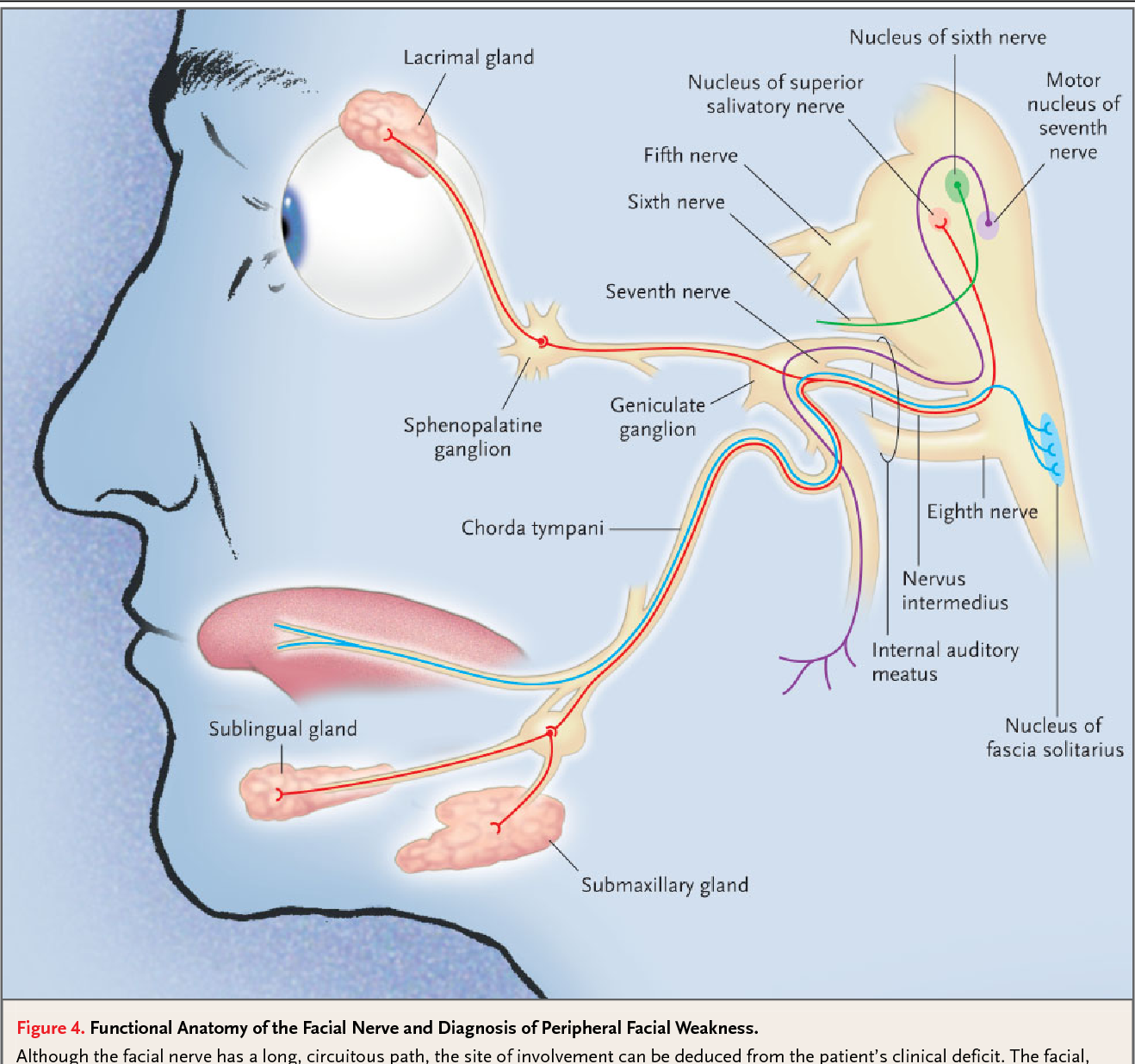 It occurs at the time of termination of the drug and can continue throughout the day. It is important not only to convince the patient of the need to stop taking daily analgesics, but also to find the reason that initially prompted him to use this class of drugs.
It occurs at the time of termination of the drug and can continue throughout the day. It is important not only to convince the patient of the need to stop taking daily analgesics, but also to find the reason that initially prompted him to use this class of drugs.
Clinical example
Patient G., 55 years old, applied to GBUZ “NIKIO im. L.I. Sverzhevsky” of the Moscow Health Department with complaints of a headache of a pressing nature, diffusely spreading over the entire right half of the head, difficulty in nasal breathing, constant discharge of a mucopurulent nature from the nasal cavity. From the anamnesis of the disease, it is known that the above complaints have been bothering the patient for more than 10 years. For a long time, the patient was observed by a neurologist on an outpatient basis at the place of residence for trigeminal neuritis, courses of conservative therapy were carried out using non-steroidal anti-inflammatory and analgesic drugs, neuroprotectors and nootropic drugs with a moderate positive effect. However, in view of the persistence of complaints, in order to exclude pathology from the ENT organs and the central nervous system, the patient was recommended to perform a CT scan of the SNP and magnetic resonance imaging (MRI) of the brain. According to the X-ray diagnostics, the patient revealed a rounded shadow in the left maxillary sinus, occupying 2/3 of its volume (mass formation, cyst (?)), total homogeneous darkening of the right maxillary sinus, darkening of the anterior cells of the ethmoid labyrinth on the right with bone destruction of the cellular structure. Also, according to the CT scan of the SNP, the bone wall in the region of the cribriform plate is not clearly visible ( lamina cribrosa ) on the right (Fig. 2). Rice. 2. CT scan of the SNP before surgery.
However, in view of the persistence of complaints, in order to exclude pathology from the ENT organs and the central nervous system, the patient was recommended to perform a CT scan of the SNP and magnetic resonance imaging (MRI) of the brain. According to the X-ray diagnostics, the patient revealed a rounded shadow in the left maxillary sinus, occupying 2/3 of its volume (mass formation, cyst (?)), total homogeneous darkening of the right maxillary sinus, darkening of the anterior cells of the ethmoid labyrinth on the right with bone destruction of the cellular structure. Also, according to the CT scan of the SNP, the bone wall in the region of the cribriform plate is not clearly visible ( lamina cribrosa ) on the right (Fig. 2). Rice. 2. CT scan of the SNP before surgery.
According to MRI, no pathology of the central nervous system and prolapse of the meninges in the region of the roof of the nose through the cribriform plate on the right were detected (Fig. 3). Rice. 3. Magnetic resonance imaging of the brain before surgery.
3. Magnetic resonance imaging of the brain before surgery.
The patient was consulted by a neurosurgeon and a neurologist: meningocele, as well as focal neurological and meningeal symptoms were not detected. The patient’s headache is exclusively sinusogenic in nature. After consulting an otorhinolaryngologist at the GBUZ “NIKIO them. L.I. Sverzhevsky” of the Moscow Department of Health, the patient was given a preliminary diagnosis: deviated septum, hypertrophic rhinitis, cyst of the left maxillary sinus, chronic right-sided hyperplastic maxillary sinusitis, ethmoid labyrinth mucocele on the right, paradoxical bending of the middle turbinate on the left.
In a hospital, GBUZ “NIKIO them. L.I. Sverzhevsky Department of Health of Moscow, under combined endotracheal anesthesia, the patient underwent surgical intervention in the following scope: septoplasty, submucosal selective laser vaporization of the inferior turbinates, partial resection of the middle turbinate on the left, micromaxillary sinusectomy on the left with removal of the cyst of the left maxillary sinus, radical surgery on the right maxillary sinus with the imposition of an artificial fistula in the region of the lower nasal passage and the removal of the ethmoid labyrinth pyocele on the right with a revision of the cribriform plate. Surgery was performed under the control of endoscopic optics 0, 30 and 45°. The pathological process in the right maxillary sinus was of a purulent-destructive nature and spread to the cells of the ethmoid labyrinth by contact. This led to the formation of a cribriform labyrinth pyocele on the right and destruction of the cellular structure of this area. The right maxillary sinus was completely sanitized by performing a radical operation, removing the altered mucous membrane and applying an artificial fistula with the lower nasal passage. The pyocele was removed completely within healthy tissues. During the revision of the area of the cribriform plate on the right, the defect of the roof of the nasal cavity was not revealed, there were no signs of nasal liquorrhea. The nasal cavity was packed with silicone bulk swabs. The patient tolerated the operation satisfactorily (Fig. 4). Rice. Fig. 4. Stages of removal of the ethmoid labyrinth pyocele on the right under the control of endoscopic optics: medialization of the middle turbinate (a), opening and removal of the pyocele (b), postoperative cavity in the cells of the ethmoid labyrinth (c).
Surgery was performed under the control of endoscopic optics 0, 30 and 45°. The pathological process in the right maxillary sinus was of a purulent-destructive nature and spread to the cells of the ethmoid labyrinth by contact. This led to the formation of a cribriform labyrinth pyocele on the right and destruction of the cellular structure of this area. The right maxillary sinus was completely sanitized by performing a radical operation, removing the altered mucous membrane and applying an artificial fistula with the lower nasal passage. The pyocele was removed completely within healthy tissues. During the revision of the area of the cribriform plate on the right, the defect of the roof of the nasal cavity was not revealed, there were no signs of nasal liquorrhea. The nasal cavity was packed with silicone bulk swabs. The patient tolerated the operation satisfactorily (Fig. 4). Rice. Fig. 4. Stages of removal of the ethmoid labyrinth pyocele on the right under the control of endoscopic optics: medialization of the middle turbinate (a), opening and removal of the pyocele (b), postoperative cavity in the cells of the ethmoid labyrinth (c).
Postoperative diagnosis: deviated septum, hypertrophic rhinitis, chronic left-sided maxillary sinusitis, cyst of the left maxillary sinus, paradoxical bending of the middle nasal concha on the left, chronic right-sided purulent-hyperplastic maxillary sinusitis, ethmoid labyrinth pyocele on the right. The tampons were removed on the 1st day after the operation, after which the patient immediately noted a regression of headache, which he had suffered for 10 years. The postoperative period was uneventful, the patient was discharged on the 3rd day after surgery, for more than 3 months there were no headache recurrences.
According to the control CT of the SNP, 1 month after the surgery, the SNP was completely pneumatized, the postoperative area with signs of a slight parietal mucosal edema (Fig. 5). Rice. 5. CT scan of the SNP 1 month after surgery.
Thus, we can conclude that a patient who comes to an otorhinolaryngologist with complaints of headache needs a thorough history taking and examination. Given the high prevalence of this pathology in the population, the diagnosis and treatment of such patients should be carried out in close cooperation with a qualified neurologist, especially in the chronic nature of headache. X-ray changes in the SNP and intranasal structures (signs of sinusitis and the presence of “contact points” of the mucous membrane) in the absence of clinical symptoms do not yet prove the rhinogenic origin of headache. Preference at the initial stages of treatment should always be given to conservative methods. Surgical interventions are considered as a last resort, their effectiveness in the treatment of pain in many cases is very limited.
Given the high prevalence of this pathology in the population, the diagnosis and treatment of such patients should be carried out in close cooperation with a qualified neurologist, especially in the chronic nature of headache. X-ray changes in the SNP and intranasal structures (signs of sinusitis and the presence of “contact points” of the mucous membrane) in the absence of clinical symptoms do not yet prove the rhinogenic origin of headache. Preference at the initial stages of treatment should always be given to conservative methods. Surgical interventions are considered as a last resort, their effectiveness in the treatment of pain in many cases is very limited.
The authors declare no conflict of interest.
Author contributions:
Study concept and design: A.K., G. Ts.
Collection and processing of material: A.K.
Statistical data processing: A.K., S.P.
Text writing: G. Ts., A. K., S.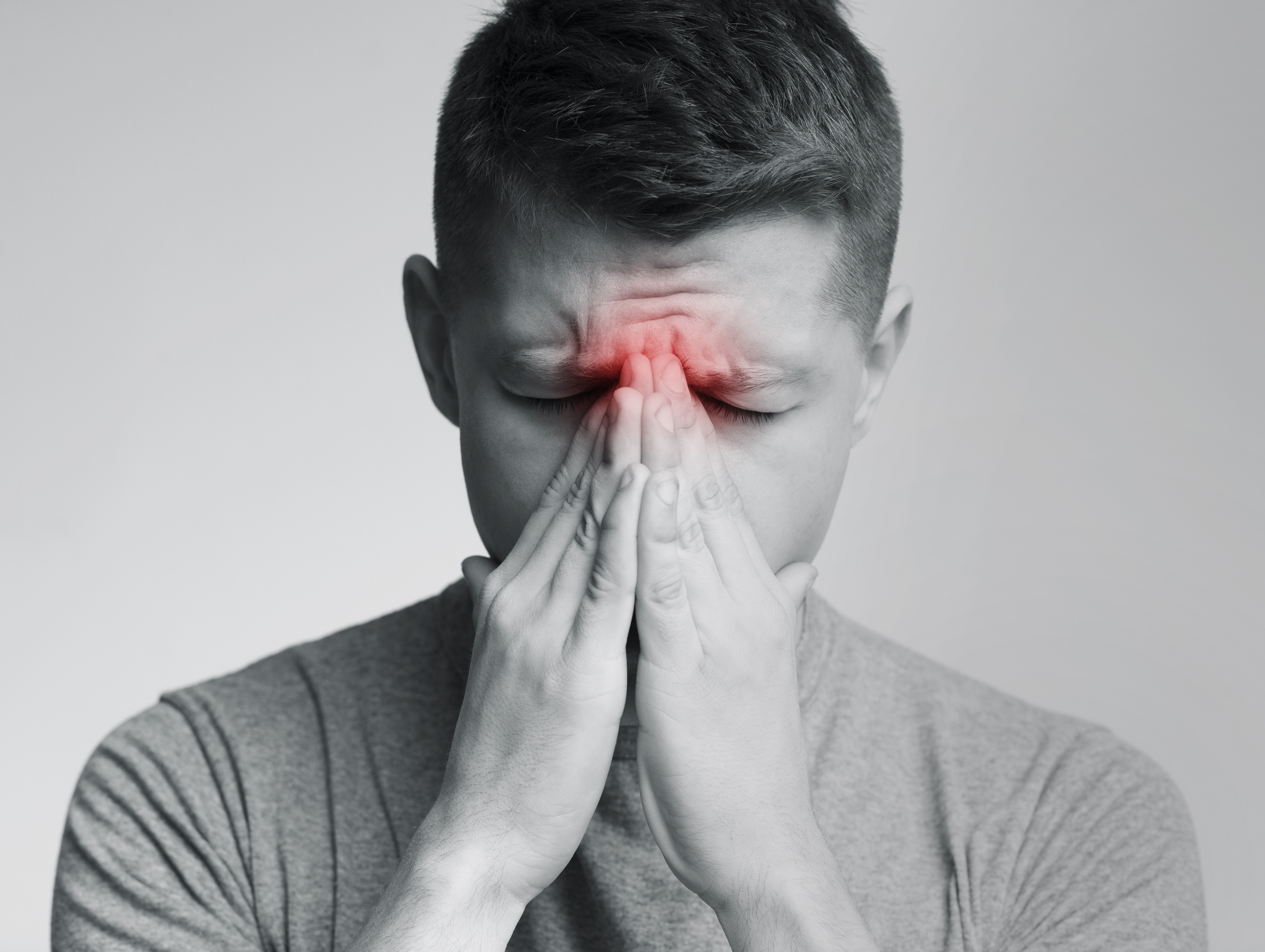 P.
P.
Editing: A.K.
Sharp pain in the nasal passage or ear canal: description of the disease, causes, symptoms, cost of treatment in Moscow
Array ( [0] => The transition of the disease to a chronic form with the occurrence of frequent relapses; [1] => Phlegmon is an inflammation of the subcutaneous fatty tissue located close to the lesion; [2] => Abscess; [3] => Abscess brain; [4] => Meningitis; [5] => Damage to the optic nerve; [6] => Inflammation of the trigeminal facial nerve; [7] => Inflammation in the lower respiratory system – with diseases of the nose; [8] => sepsis.)
Disease description
With a sharp pain, the body signals the presence of a pathological process that needs to be eliminated. Quite often there are complaints about discomfort in the ear or nose, which arose unexpectedly and, it would seem, for no reason. It is important to establish the causes of this phenomenon as soon as possible and begin a full-fledged therapy that will avoid the occurrence of complications.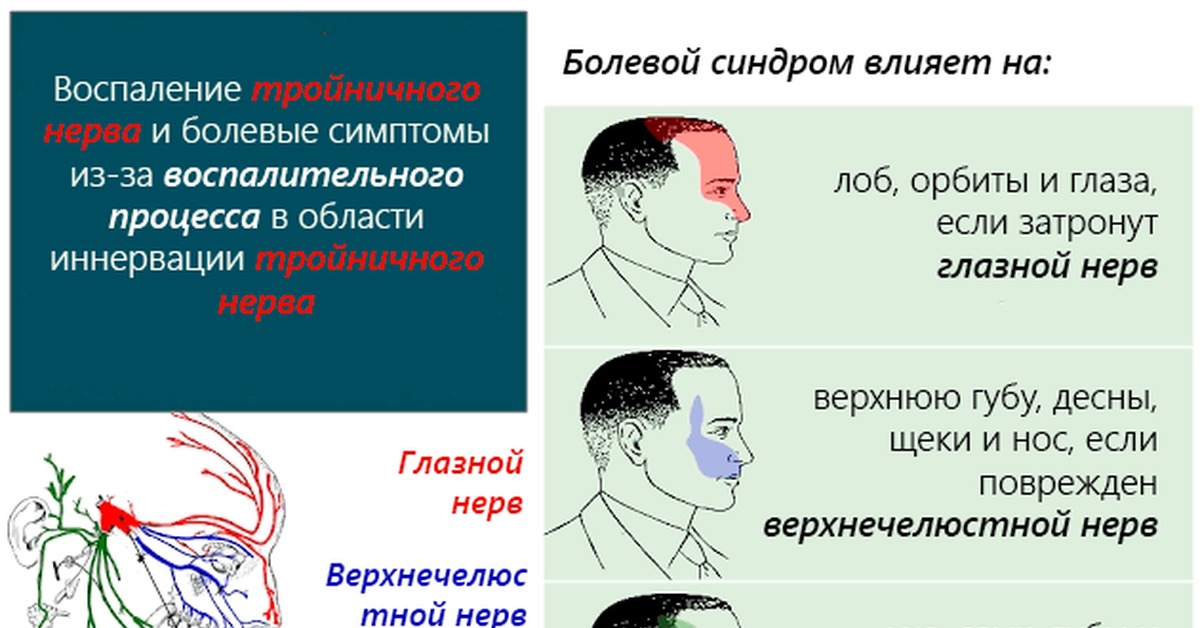
The appearance of pain, if its cause is unknown, cannot be ignored. Often these sensations are the very first signal of the disease. If you pay attention to them in a timely manner, it turns out to eliminate the violation in health at the very beginning. Treatment in such a situation is much simpler and shorter. It is also worth remembering that if you start the disease, then for its treatment you will need to spend much more money.
Causes of acute pain in the ear
Severe pain in the ear occurs most often due to damage to the middle ear. In such a situation, inflammatory processes or mechanical tissue damage may occur. Also, the presence of acoustic trauma cannot be ruled out, when the ear is damaged due to a very loud sound.
Mechanical injuries include eardrum punctures, caustic chemicals entering the ear, and foreign body penetration into the ear. In this case, the pain is especially severe, accompanied by hearing loss. Other causes of ear pain are:
violation of intra-ear pressure due to a failure in the process of its regulation through the auditory tube – in such a situation, a sharp pain appears at the time of take-off due to a sharp climb by the aircraft and a rapid pressure drop, as well as during a rapid dive to depth;
excessive sensitivity of the ear to cold – in this case, there are no pathological changes, but as soon as a person goes out of the heat into the cold, he develops a sharp pain in the ear.
 The exact reason for this phenomenon has not been established. Presumably it is associated with an excessive number of nerve endings in the tissues of the ear canal;
The exact reason for this phenomenon has not been established. Presumably it is associated with an excessive number of nerve endings in the tissues of the ear canal;otitis media – most often develops otitis media, in which inflammation affects the middle ear. In most cases, the problem is diagnosed in a child, but an adult can also face it. Otitis externa appears much less frequently, in which inflammation affects the skin of the ear canal. The usual cause of otitis externa is the ingress of water from an open stagnant reservoir into the ear, in which there are a large number of pathogenic bacteria;
mastoiditis – with this disease, inflammation affects the mastoid process of the temporal bone. More often, this phenomenon occurs as a complication of undertreated acute otitis media;
neoplasms in the ear;
inflammatory diseases of the temporomandibular joint – the pain is very strong and appears at the slightest movement of the jaw.
 It is not uncommonly mistaken for earache due to the proximity of nerve endings, since the joint is located behind the front wall of the ear;
It is not uncommonly mistaken for earache due to the proximity of nerve endings, since the joint is located behind the front wall of the ear;dental diseases and improperly selected dentures – due to the fact that the same third branch of the trigeminal nerve is responsible for the sensitivity of the teeth and ears, it is not uncommon for pain to appear in the ear due to problems in the oral cavity. She can be very sharp and strong;
the presence of tumors in the throat – quite often it is a sharp pain in the ear when swallowing that is the first symptom of the disease. At the same time, ear pathologies are not detected by examination, and therefore a mandatory examination is required to identify a latent tumor process. A person may not feel other manifestations of the tumor;
sinusitis – due to the rapid increase in pressure in the ear sinuses, it is not uncommon for there to be a sharp pain in the ears when changing the position of the body.
 In such a situation, especially strong pain sensations are noted in the ears with frontal sinusitis, when inflammation affects the frontal nasal sinuses.
In such a situation, especially strong pain sensations are noted in the ears with frontal sinusitis, when inflammation affects the frontal nasal sinuses.
Only a doctor can accurately determine the cause of pain in the ear. It is impossible to diagnose the problem on your own. A sharp pain in the ear, the causes of which have not been established, is an extremely serious signal and requires a complete examination of the body.
Causes of pain in the nose
Pain in the nose appears much less frequently than in the ear, but can also occur abruptly, without clear reasons for the patient. To understand what caused the sharp pain, without going to the doctor, is possible only in case of injury. The moment of receiving it is obvious, and tissue damage can sometimes be determined even by eye. Most often, soft tissues or nasal cartilage are injured. To rule out a fracture of the skull bones, an x-ray is required. If the damage has affected the cartilage, it is mandatory to seek medical help.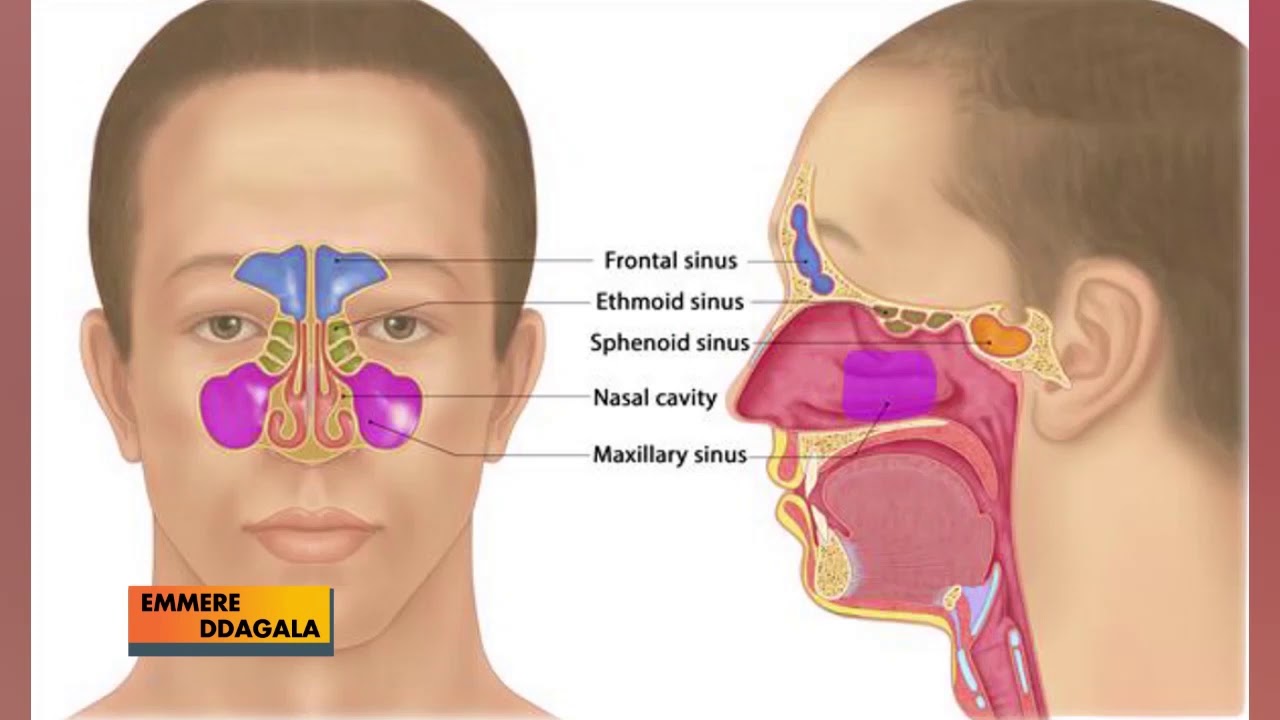
Other causes of sharp pains in the nose can be:
the beginning of the development of a boil – the pain occurs sharply at the time of the development of the infiltrate and increases rapidly. In this case, swelling of the nose and its redness may occur. The general condition of the patient suffers quite often due to the appearance of intoxication;
acute inflammation of the paranasal sinuses or exacerbation of sinusitis in a chronic form – a sharp pain in the nose is most often the first symptom of a disorder, to which other signs of the disease quickly join;
nasociliary neuralgia – the problem in most cases appears before the age of 40 years. Pain with it is intense, paroxysmal, appearing very sharply. More often the attack develops at night and lasts from half an hour to several hours;
pterygoid ganglionitis – sharp unexpected pains appear in the nose and give to the orbit and directly to the eye.
 Much less often, in some cases, the occurrence of pain in the gums is also possible. The attack often begins at night and lasts from several minutes to 2 days. Over-the-counter analgesics are of little help.
Much less often, in some cases, the occurrence of pain in the gums is also possible. The attack often begins at night and lasts from several minutes to 2 days. Over-the-counter analgesics are of little help.
Can cause sharp pain in the nose and growths that disrupt the position of the nerve endings. In most cases, they are benign and can be easily removed. Malignant tumors of the nose require much more serious treatment, and with their advanced form, the prognosis for the patient is not favorable.
Which of the doctors to contact
Initially, if there is a sharp pain in the nose or ear, you can contact a general practitioner or an otolaryngologist. In the presence of inflammation of the nerve, the patient may be referred for an appointment with a neurologist. Also, in case of injury, the help of a surgeon or traumatologist may be required.
When the presence of neoplasms in the nasal cavity or in the ear canal is detected, the person is sent for an appointment with an oncologist.

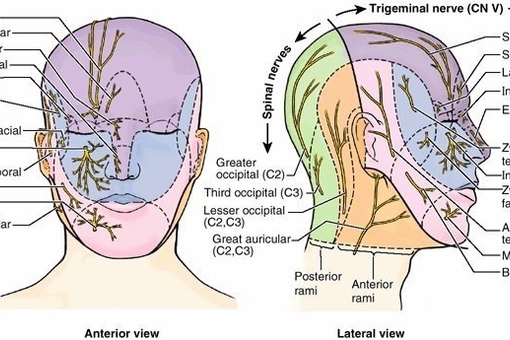
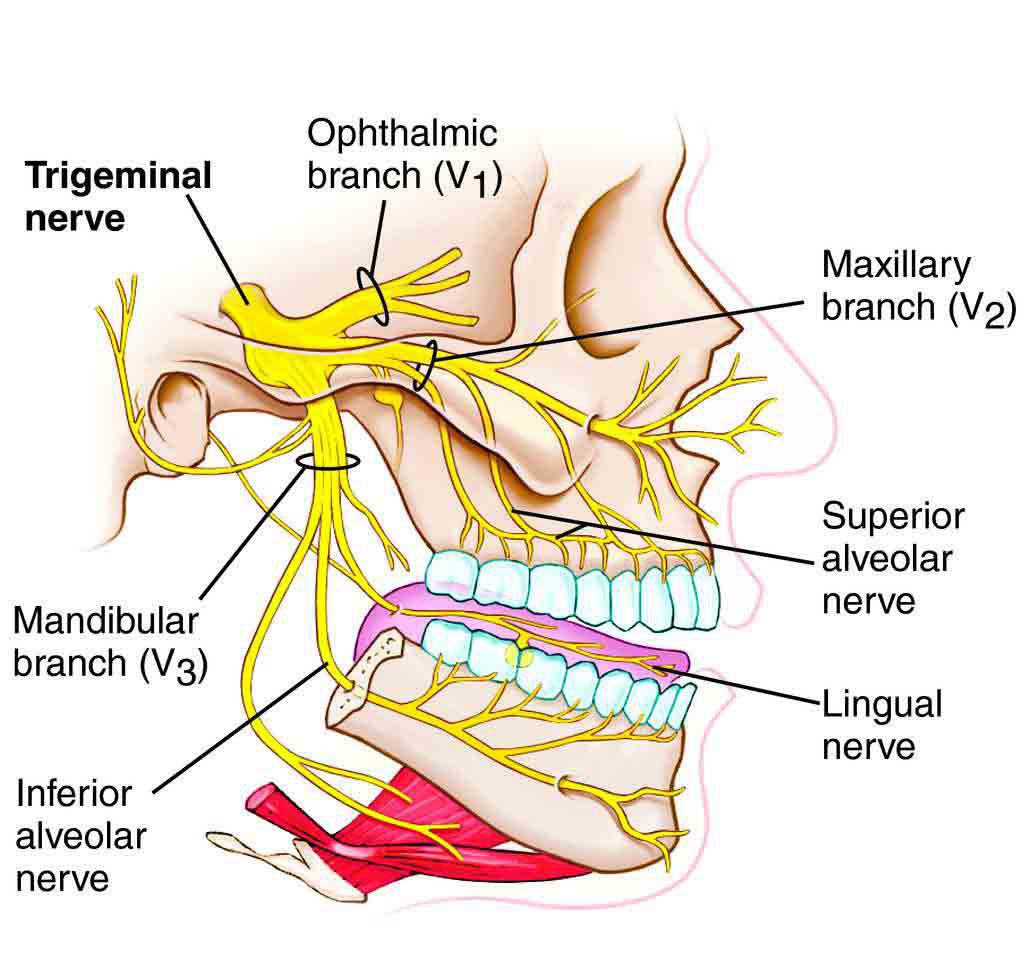
 doi: 10.1111/j.1533-2500.2006.00056.x.
doi: 10.1111/j.1533-2500.2006.00056.x.
 The exact reason for this phenomenon has not been established. Presumably it is associated with an excessive number of nerve endings in the tissues of the ear canal;
The exact reason for this phenomenon has not been established. Presumably it is associated with an excessive number of nerve endings in the tissues of the ear canal; It is not uncommonly mistaken for earache due to the proximity of nerve endings, since the joint is located behind the front wall of the ear;
It is not uncommonly mistaken for earache due to the proximity of nerve endings, since the joint is located behind the front wall of the ear;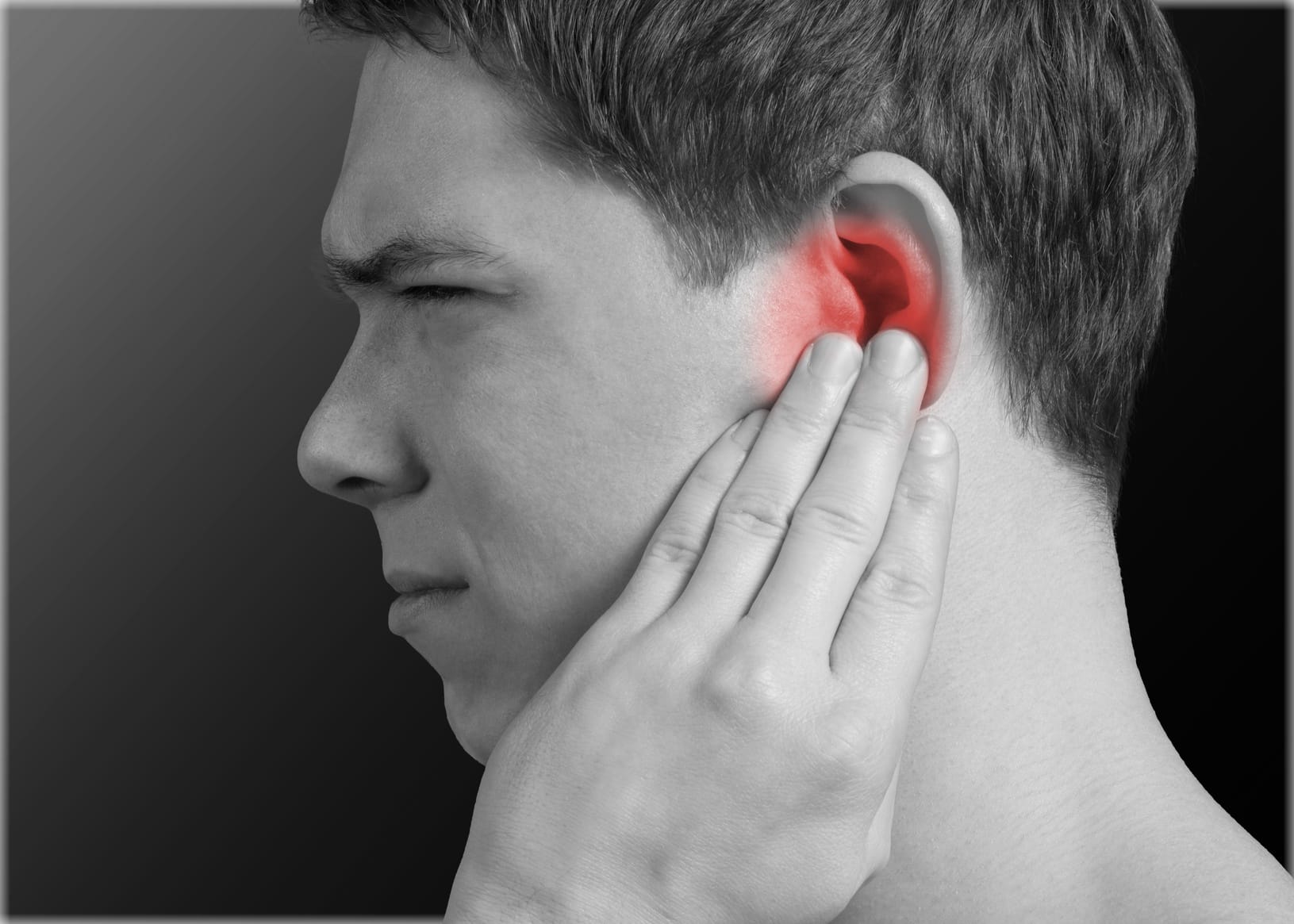 In such a situation, especially strong pain sensations are noted in the ears with frontal sinusitis, when inflammation affects the frontal nasal sinuses.
In such a situation, especially strong pain sensations are noted in the ears with frontal sinusitis, when inflammation affects the frontal nasal sinuses. Much less often, in some cases, the occurrence of pain in the gums is also possible. The attack often begins at night and lasts from several minutes to 2 days. Over-the-counter analgesics are of little help.
Much less often, in some cases, the occurrence of pain in the gums is also possible. The attack often begins at night and lasts from several minutes to 2 days. Over-the-counter analgesics are of little help.